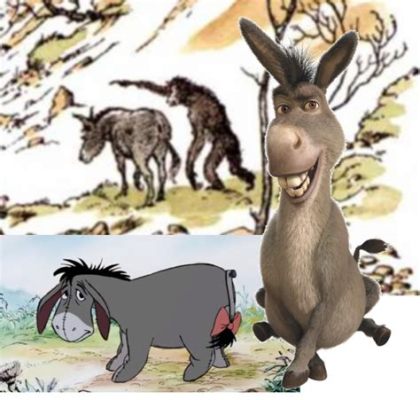Juanito and the Talking Donkey: Exploring the Boundaries Between Reality and Folklore in Ancient Spain

Within the tapestry of ancient Spanish folklore lies a captivating narrative that seamlessly blends fantastical elements with everyday human experiences. “Juanito and the Talking Donkey” whispers tales of a young shepherd named Juanito, whose extraordinary encounter with a philosophical donkey challenges conventional wisdom and delves into the complexities of communication, understanding, and the very nature of reality itself.
While concrete historical records detailing this specific story are scarce, its presence within oral traditions suggests a rich cultural heritage dating back to the first century AD. Passed down through generations, “Juanito and the Talking Donkey” reflects the values, beliefs, and concerns of ancient Iberian society, offering a window into their worldview and understanding of the natural world.
The Setting: A Pastoral Idyll with a Twist
Imagine sun-drenched plains dotted with olive groves and ancient oak trees casting long shadows across rolling hills. This idyllic setting serves as the backdrop for Juanito’s solitary life as a shepherd, tending to his flock under the watchful gaze of the azure Spanish sky. But within this seemingly serene environment lurks a thread of magic, ready to unravel the fabric of everyday reality.
Juanito, depicted as a kind-hearted and inquisitive youth, embodies the archetypal figure of innocence seeking knowledge and understanding. He represents the human yearning for connection beyond the tangible world, a desire amplified by his encounters with the enigmatic talking donkey.
The Encounter: A Conversation Beyond Words
One fateful day, while tending to his sheep, Juanito stumbles upon an unusual sight – a grey donkey adorned with intricate patterns seemingly etched into its coat. To his astonishment, this donkey not only walks upright but also engages Juanito in a profound conversation, discussing everything from the mysteries of the universe to the intricacies of human behavior.
This encounter challenges preconceived notions of animal intelligence and introduces a sense of wonder that permeates the narrative. The talking donkey acts as a conduit for philosophical discourse, prompting Juanito and the reader to question the boundaries between human and animal cognition.
Themes of Communication and Understanding:
The heart of “Juanito and the Talking Donkey” lies in its exploration of communication and understanding. The donkey’s ability to speak raises profound questions about the nature of language and the possibility of bridging the gap between different species.
Through their dialogues, Juanito and the donkey delve into themes of empathy, compassion, and the importance of listening attentively to diverse perspectives. The story suggests that true understanding transcends spoken words and involves a deep recognition of shared experiences and emotions.
| Theme | Explanation |
|---|---|
| Communication: | The story explores the complexities of communication beyond spoken language, suggesting that genuine connection can arise from empathy and attentive listening. |
| Understanding: | “Juanito and the Talking Donkey” emphasizes the importance of recognizing diverse perspectives and valuing experiences beyond our own. |
| Reality vs. Fantasy: | The tale blurs the lines between reality and fantasy, inviting readers to embrace the possibility of magic and wonder in everyday life. |
Beyond Literal Interpretation: Unveiling Deeper Meanings
While “Juanito and the Talking Donkey” can be enjoyed as a whimsical tale, it also harbors deeper meanings that resonate with audiences on multiple levels.
The talking donkey can be interpreted as a symbol of Juanito’s own subconscious mind, offering him insights and wisdom he might not otherwise access. Their conversations represent an internal dialogue, prompting Juanito to grapple with existential questions and explore his place in the world.
Enduring Legacy: The Talking Donkey’s Message Echoes Through Time
“Juanito and the Talking Donkey” continues to captivate audiences centuries after its likely origin. Its enduring appeal lies in its ability to transcend cultural boundaries and speak to universal human experiences.
The story reminds us of the power of imagination, the importance of open-mindedness, and the transformative potential of genuine connection. It serves as a timeless testament to the magic that can be found within the ordinary and the profound lessons we can learn from unexpected encounters.
